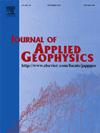Time-lapse amplitude variation with offset difference inversion based on the reformulated Biot-Squirt model
IF 2.2
3区 地球科学
Q2 GEOSCIENCES, MULTIDISCIPLINARY
引用次数: 0
Abstract
Time-lapse AVO (Amplitude variation with offset) inversion is a significant technique for the estimation of dynamic reservoir changes. The main theoretical foundation is Zoeppritz equations in single-phase media. At present, there are studies on the inversion method of using Biot's theory. Although it has some improvements in accuracy compared with the method of using Zoeppritz equations, the squirt-flow mechanism is not considered. Furthermore, the precision of difference data equations still needs to be improved in difference inversion. In view of the above problems, the reformulated BISQ (Biot-Squirt) model is introduced into the inversion, and the iterative optimization is used to increase the precision of difference data equations continually in this paper. First, we derive the difference data equations about the reservoir-parameter changes. The reformulated BISQ model is applied, and can describe the characteristics of P-wave reflection accurately and expediently. Secondly, the objective function about the reservoir-parameter changes is constructed. The Bayesian theory and the model smoothing constraint are used, and are helpful to obtain accurate and stable solutions. Thirdly, we derive the equation for estimating the reservoir-parameter changes, and the inversion is iterative for the continuous improvement of accuracy. The difference inversion method is applied, and is helpful to enhance the data repeatability and reduce the calculation amount. Finally, synthetic and real data are applied for the inversion and testing to prove the effectiveness and feasibility of the method.
求助全文
约1分钟内获得全文
求助全文
来源期刊

Journal of Applied Geophysics
地学-地球科学综合
CiteScore
3.60
自引率
10.00%
发文量
274
审稿时长
4 months
期刊介绍:
The Journal of Applied Geophysics with its key objective of responding to pertinent and timely needs, places particular emphasis on methodological developments and innovative applications of geophysical techniques for addressing environmental, engineering, and hydrological problems. Related topical research in exploration geophysics and in soil and rock physics is also covered by the Journal of Applied Geophysics.
 求助内容:
求助内容: 应助结果提醒方式:
应助结果提醒方式:


